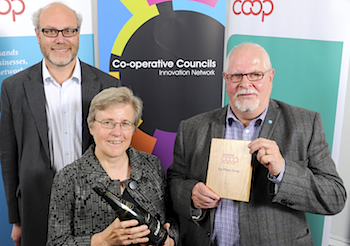KCOM has been selected by Rail Settlement Plan to replace and manage a new suite of applications deployed in the cloud to improve ticketing services throughout the UK.
KCOM will deliver a new Data Capture and Apportionment Service (DCAS), Portal Service and a re-architected and developed Replacement Availability and Reservation Service (RARS) to RSP.
As a Premier Consulting Partner for Amazon Web Services (AWS) there was also a clear operational and technological fit between KCOM and RSP for cloud services.
Replacing the legacy DCAS will provide major improvements compared to the current system, capturing all UK ticket sales information and apportioning the revenue of rail tickets, covering both the Train Operating Companies and third party retailers.
KCOM has already helped RSP increase ticketing capacity by 20%.
The development of a Portal Service will provide RSP with a secure messaging integration hub for both new and existing systems.
This will handle high volumes of messages with rapid response times. RSP collects sales data from 8,500 ticket-issuing systems from retailers alone, and ensuring the accuracy of the messages based on this data is paramount.
The new contracts will see KCOM deliver the critical RARS system, both improving the current service and delivering new functionality. This service will enable retailers to book reservations on all trains, coaches or ferries with reservable seats.
RARS will hold details of all available services including carriages, seats and fares and seat maps, allowing passengers to identify and reserve seats more easily. Furthermore this data will then enable train companies to better manage revenue.
As every journey planning and ticket issuing system uses RARS to confirm seat availability and to make bookings, both high availability and rapid response times are vital.
"These are critical systems for the passenger rail industry," said Brian Jones, Head of Programmes for RSP. "Customer facing processes such as reservations and ticketing, and the crucial revenue apportionment systems behind the scenes all need fast response times and complete accuracy. We look forward to delivering these innovative services with KCOM."
Bill Halbert, CEO, KCOM, added: "In 2011, we won separate competitive tenders to engage with divisions within the RDG. In 2014 we followed this with the contract to deliver Live Sales Management (LSM) to RSP, as well as work with National Rail Enquiries.
"We are proud indeed to have become such a key partner and hope to continue to develop significant innovations for the passenger rail industry."
 Turnover growth of 19% in five years to £10m, a hike in membership numbers to 11,000 and a strong ethical commitment have all combined to secure The Phone Co-op the 2016 Growing Co-operative of the Year Award.
Turnover growth of 19% in five years to £10m, a hike in membership numbers to 11,000 and a strong ethical commitment have all combined to secure The Phone Co-op the 2016 Growing Co-operative of the Year Award.
 True Telecom has formed a six month fundraising partnership with charity Make-A-Wish UK in a bid to help it reach this year's £11.5m target, which will allow more than 1,000 wishes to be granted to children and young people fighting a life-threatening condition.
True Telecom has formed a six month fundraising partnership with charity Make-A-Wish UK in a bid to help it reach this year's £11.5m target, which will allow more than 1,000 wishes to be granted to children and young people fighting a life-threatening condition. Aerial Business Communications celebrated three decades in business on No Man's Fort in the Solent last month. The 30th anniversary bash included live entertainment from the Vernon Sisters, a break dancing flash mob, digital magician, DJs, mermaids and prize giveaways throughout the party.
Aerial Business Communications celebrated three decades in business on No Man's Fort in the Solent last month. The 30th anniversary bash included live entertainment from the Vernon Sisters, a break dancing flash mob, digital magician, DJs, mermaids and prize giveaways throughout the party. Hats off to Swindon-based Excalibur Communications for collecting the Business in the Community's South West Responsible Business Award.
Hats off to Swindon-based Excalibur Communications for collecting the Business in the Community's South West Responsible Business Award. IT distributor The Change Organisation is set to undergo a business transformation under the leadership of incoming CEO Adrian Barnard (pictured).
IT distributor The Change Organisation is set to undergo a business transformation under the leadership of incoming CEO Adrian Barnard (pictured). Leeds-based Skyrack Telecom, which began its commercial life in 2009 as a provider of unified telecoms services, is to rebrand as Simetric Telecom.
Leeds-based Skyrack Telecom, which began its commercial life in 2009 as a provider of unified telecoms services, is to rebrand as Simetric Telecom.